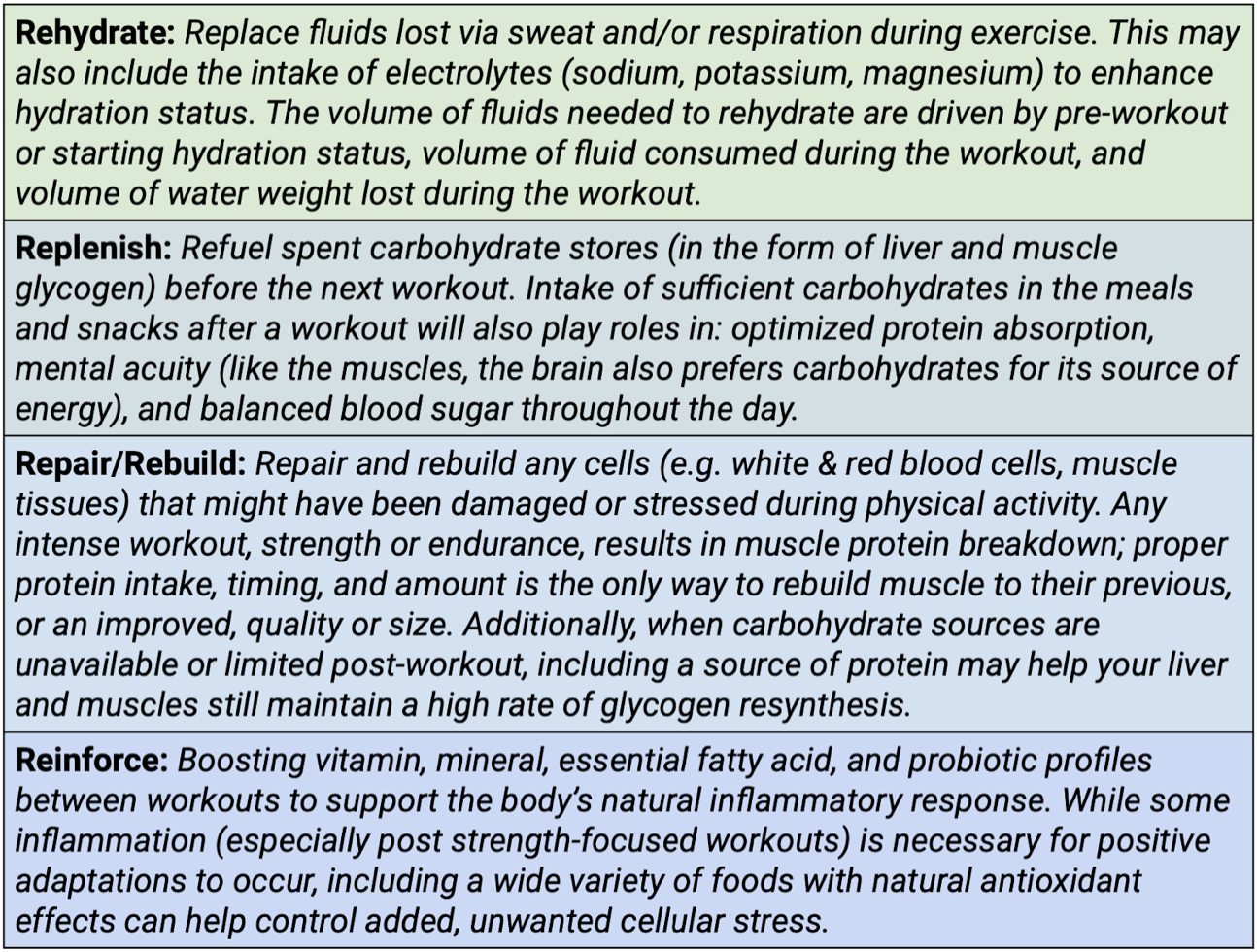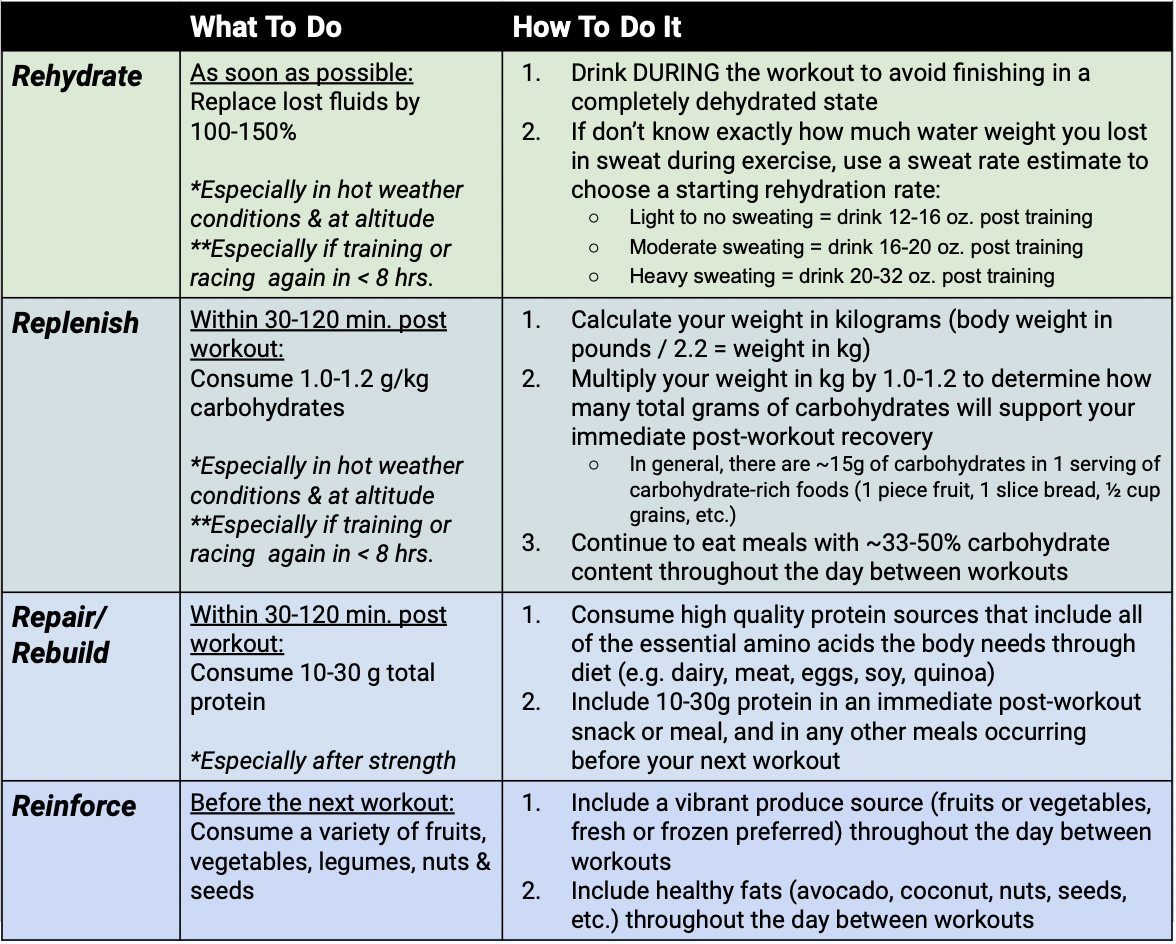Nutrition for Recovery
by GRP dietician Megan Chacosky
In the world of sport, recovery can often be one of the most overlooked components to maximizing training efforts. For example, how many of us intentionally schedule time to rest, stretch, or refuel in our calendars the same way we block out meetings, workouts, or appointments? However unintentional, not making adequate time and effort for recovery - in both physical and mental capacities - can lead to decreased performance in sport and life. Particularly in the space of nutrition, our bodies have limited daily storage supplies of some direct energy sources, or nutrients necessary for energy production, and not replenishing these sources (which we burn through much more quickly when training) leaves us at a severe disadvantage when trying to adapt physiologically, maintain immune and overall health, or train multiple sessions per day. Better understanding why nutrition recovery is invaluable, what key nutrients are required, and how to individualize your personal replenishment needs in relation to your training can help you make the most of your health and sport performance goals.
Despite its importance, just like starting a new training program or building up to a lofty exercise goal, the idea of not only mapping out an exercise regime, but also thinking about an “ideal” recovery plan can easily become daunting - even after acknowledging the symptoms of subpar nutrition recovery:
Dehydration (resulting in potential thirst, higher resting heart rate, headache, dizziness)
Decreased cognitive function (reduced reaction time, decision-making, general focus)
Extended delayed onset muscle soreness (muscle tightness, pain, or cramping >24 hours)
Decreased physical performance (reduced power, speed/intensity, and/or duration)
Extended general fatigue (low energy availability or relative energy deficiency)
While there are assuredly tens of thousands of competing ideas available online about the “best” time, type, or amount of food for recovery to avoid these pitfalls, it’s impossible to respect each person’s evolving mental, emotional, and physical nutrition recovery needs with a one-size-fits-all approach. To better understand the “why’s” and “what’s” behind recovery nutrition, and allow for personalized, nuanced, but also informed recovery food choices, consider “The 4 R’s:”
In priority order (fluids, carbohydrates, proteins, & fats/micronutrients), “The 4 R’s” represent the top food groups to emphasize when choosing beverages, snacks, or meals to aid your recovery. Especially if including a recovery nutrition pattern post-workout is brand new to your training plan, focusing on choosing any beverage or snack that hits these food groups is a great start. Once you feel confident incorporating the components of The 4 R’s in some capacity, you can start to get a little more personalized about timing and amounts of recovery nutrients to take your nutrition to the next level. Certain types of training windows, frequencies, styles, or goals might affect your recovery nutrition as well. If you’re already covering those basics in some fashion, the next layer of nutrition recovery is tailoring the timing and amounts of foods to you, your workouts, and your training goals:
Fortunately, in the space of nutrition, when recovery is approached purposefully, food can serve as an aide to both physical and mental fatigue. Especially when the ideal timing, type, and amount of nutrients paired for a variety of different workouts are understood, building out simple, repeatable nutrition habits to benefit recovery can quickly become an innate part of your upcoming training or racing goals. A few of my go-to favorite recommendations include:




